Data physicalization: Project Buoy
Problem Statement: How do people from different countries decide where to pursue their post-graduate education?
Our design was inspired by the design of Cairn(Gourlet and Dassé, 2017). Cairn is a tangible apparatus that enables data collection, visualization and analysis. It invites Fablab visitors to reflect on their practices by materializing their activities using small colored woodentiles.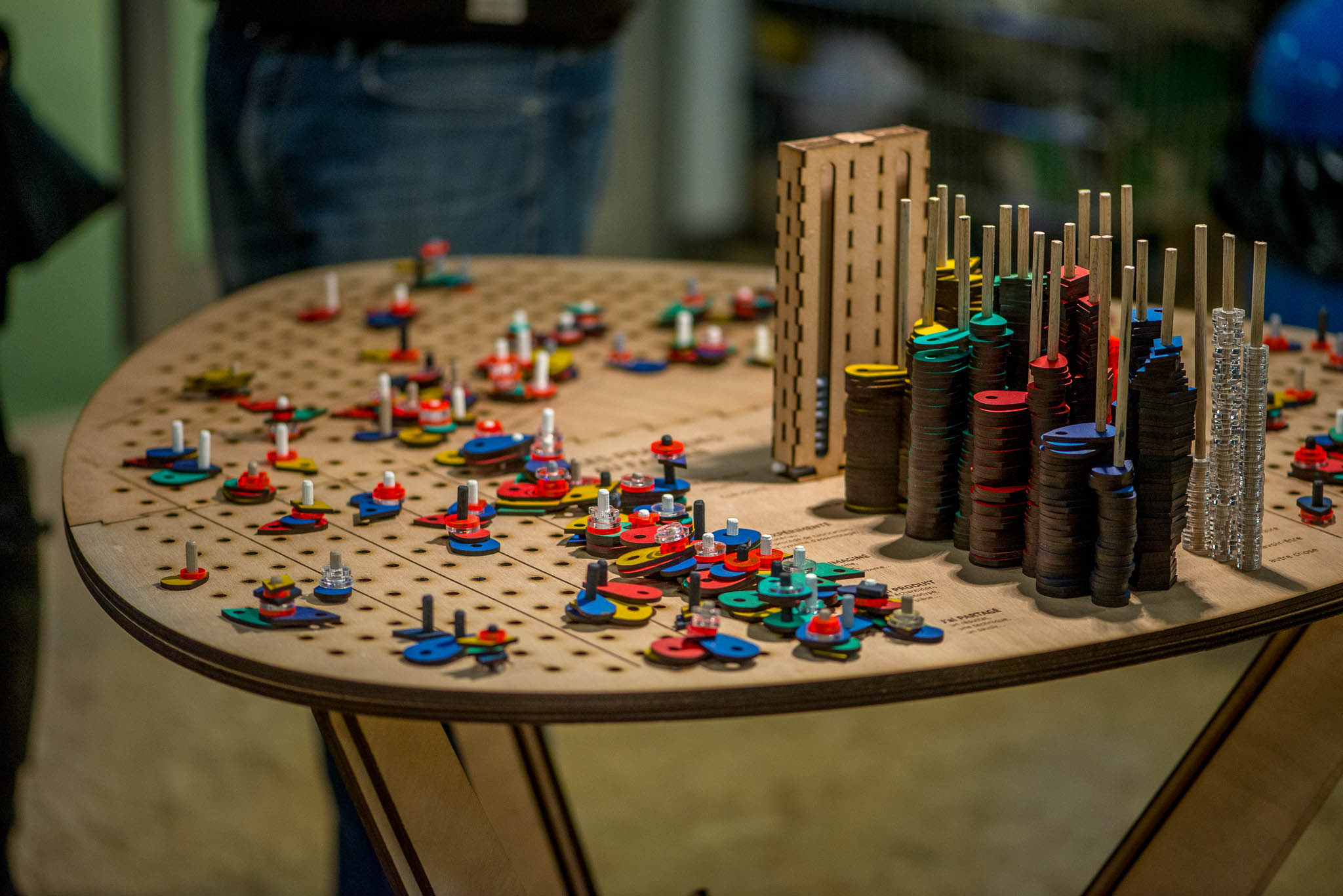
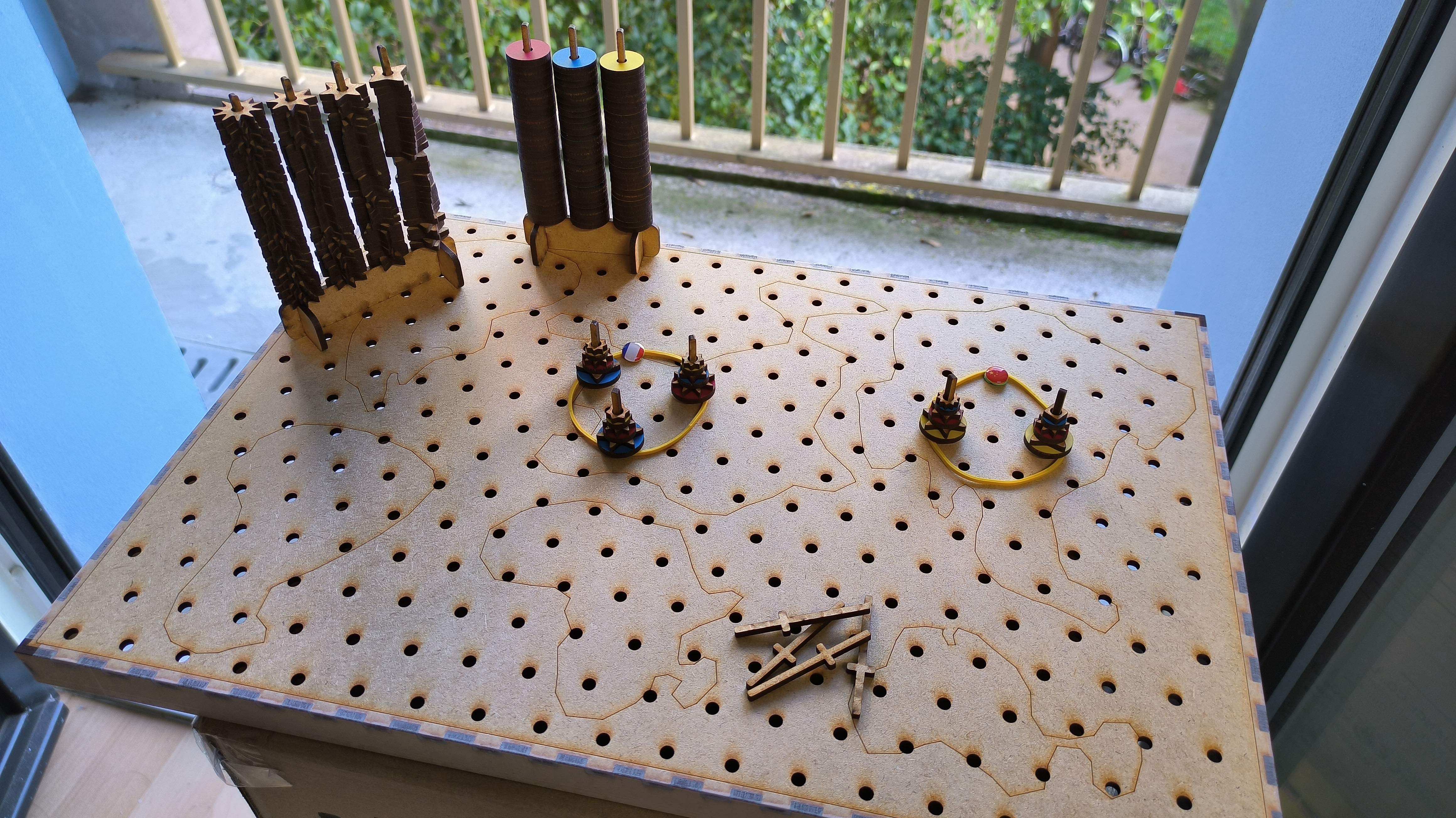
Three Modifications
1 . Use questions in pairs(base + augmented)
2 . Tokens with different sizes(to deliver sorted info)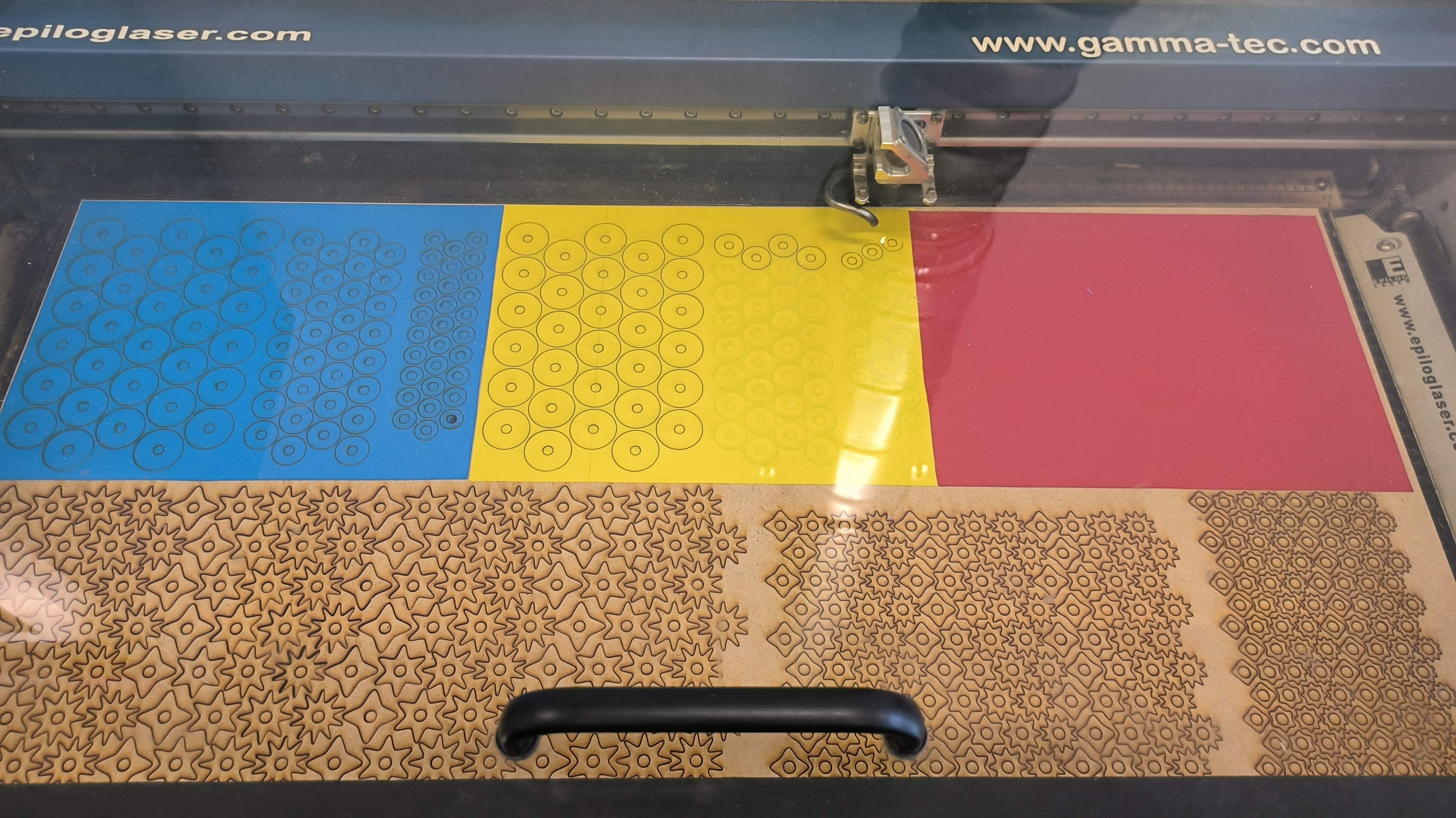
3 . Rubber bands with markers(extendable areas)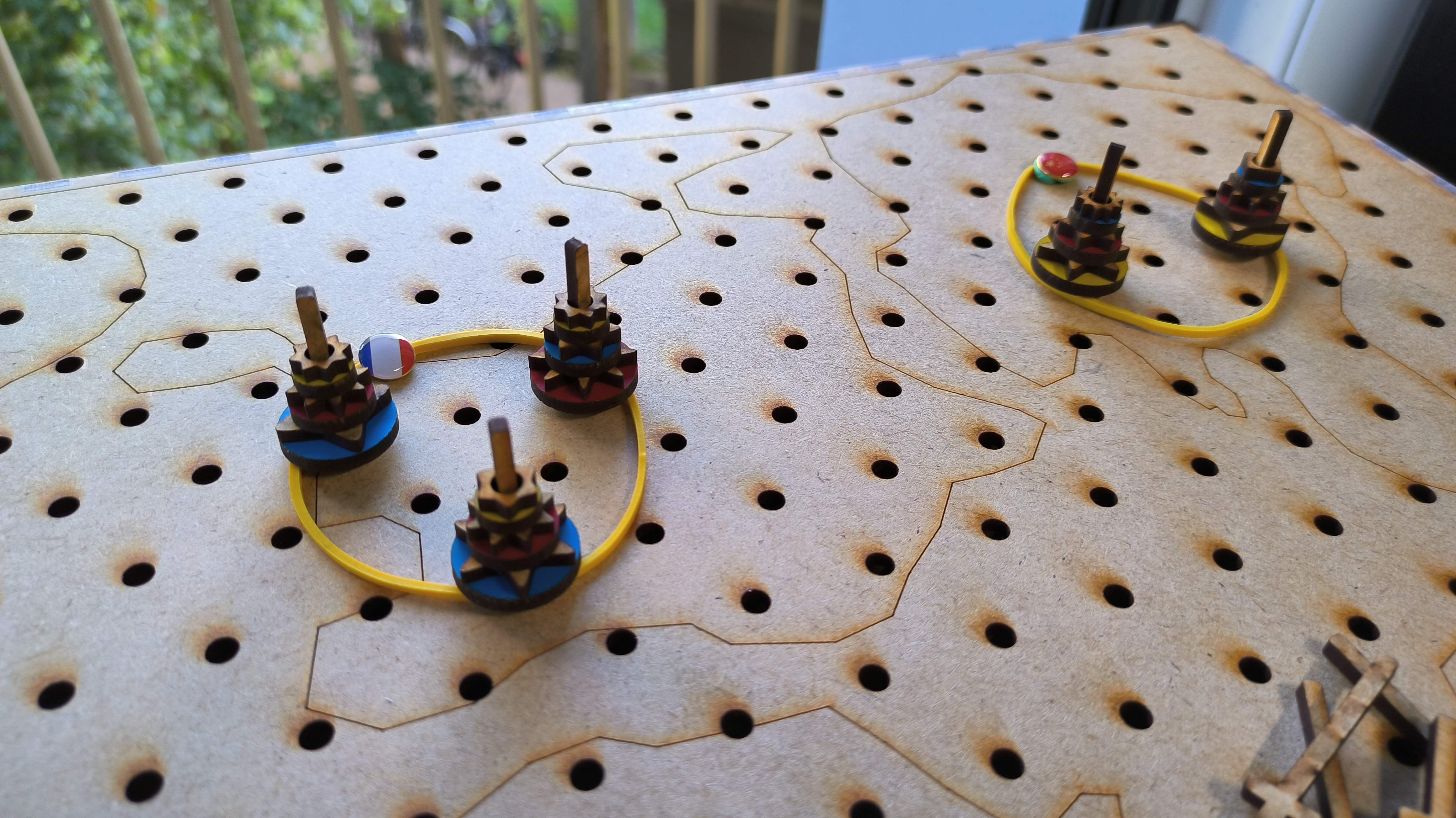
Advantages and Disadvantage
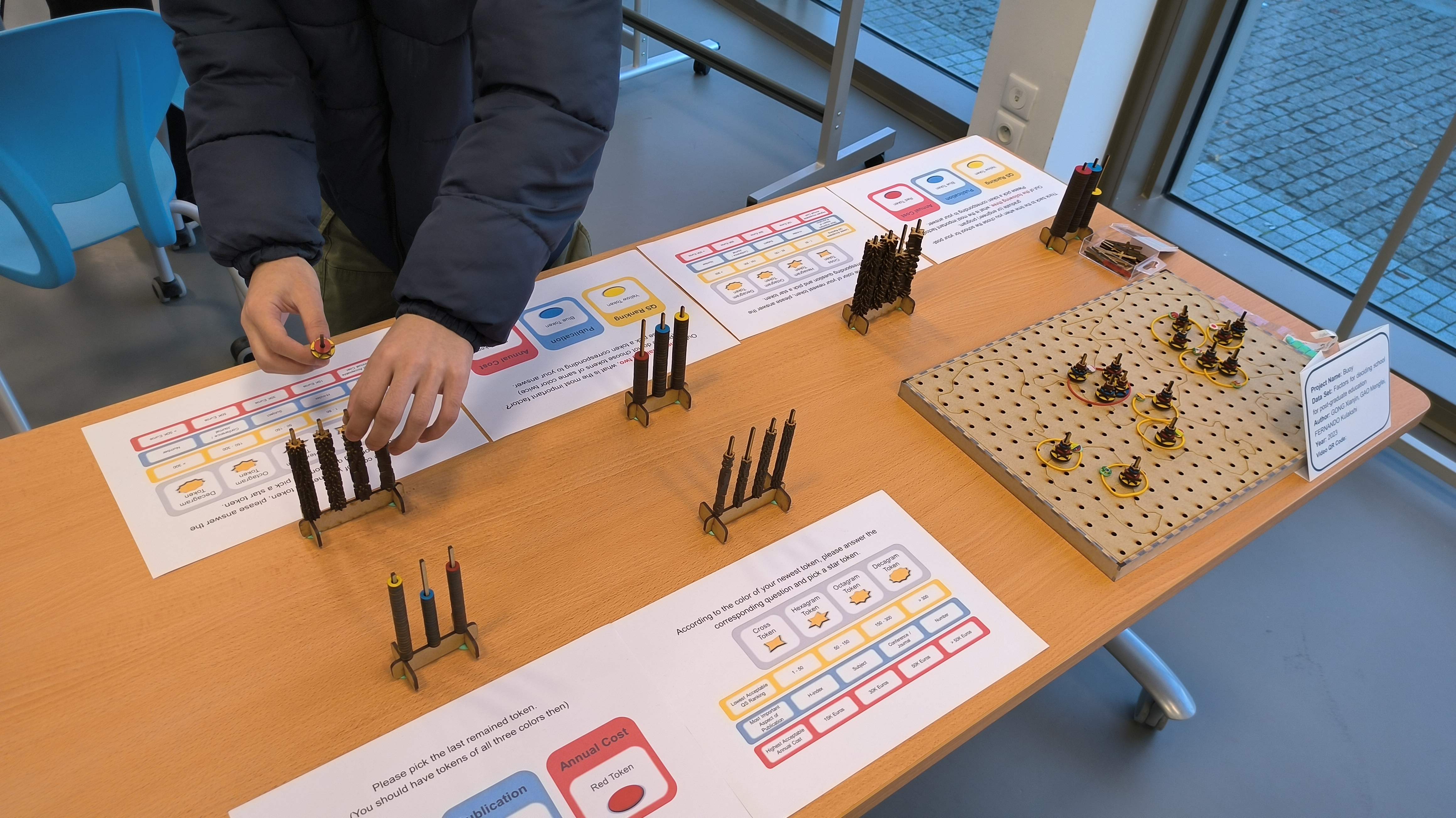
Compared to Cairn, our design can desaribe more complex answers by the combination of round and star tokens. Second, for each data point, our design can promise a complete and concise information delivery by only one glance from the top. Third, our design can provide sorted information in a natural way by decreasing size of tokens along the skewer.
However, if one more pair of questions is wanted, the area of the board has to be doubled. We consider it as a trade-off for clearer information delivery.